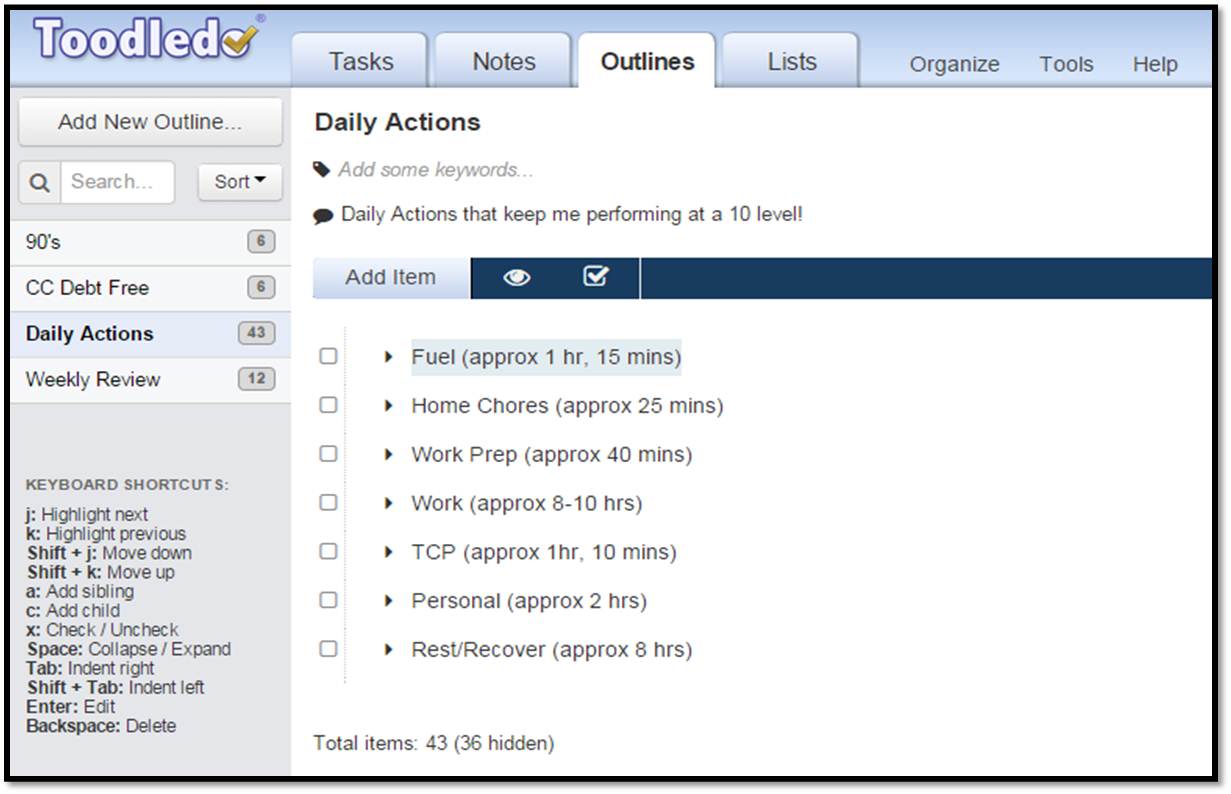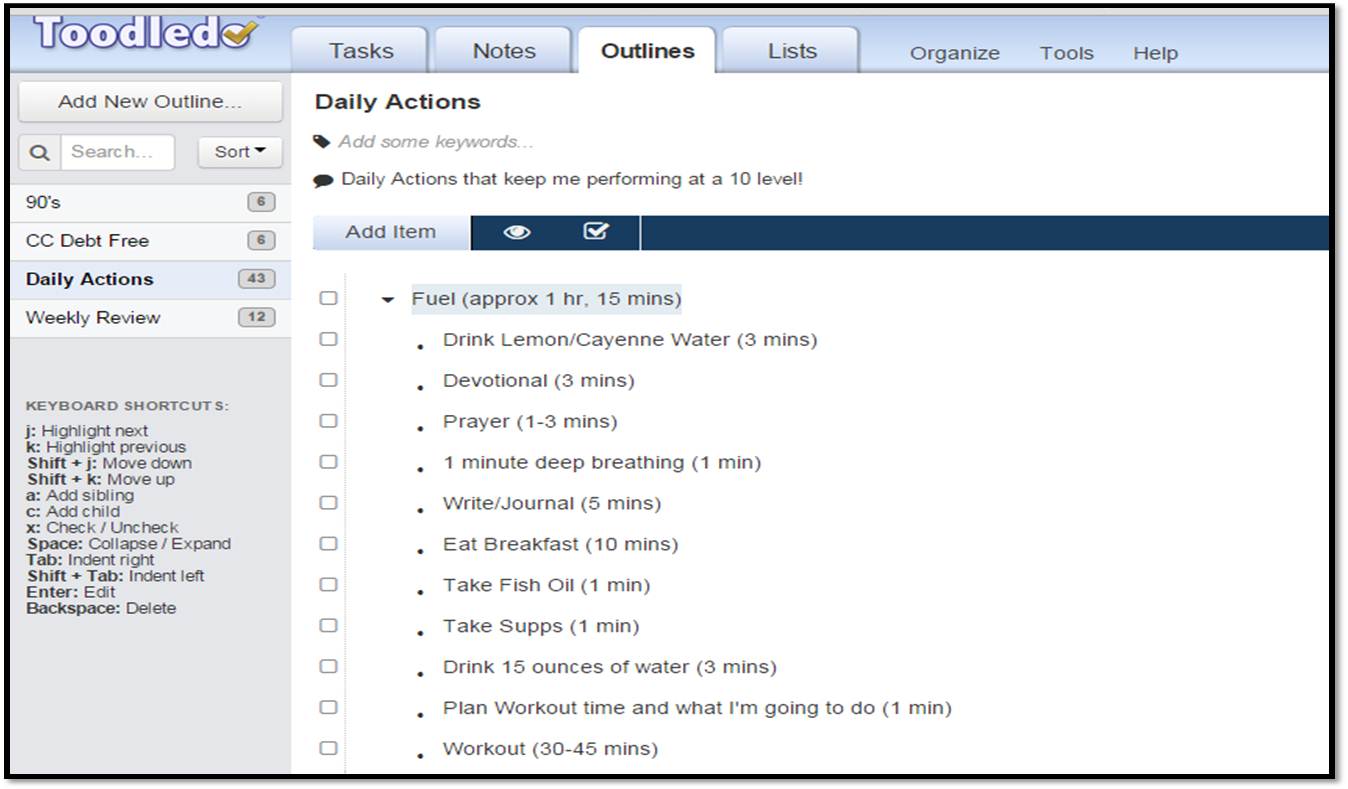5 Fool-proof Keys to Using Checklists (So You WILL Dominate Your Day!)
Dec 08, 2014Do you utilize checklists to manage your day? Especially for consistent tasks that you need to perform each and every day. If you’re not, you need to.
Checklists can literally be a life saver. Just ask Atul Gawande, who wrote a fantastic book called “The Checklist Manifesto”. Gawande is a general and endocrine surgeon and also a professor at Harvard.
Another fantastic writer, Malcom Gladwell, wrote the following about Gawande in his review of the book:
Over the past decade, through his writing in The New Yorker magazine and his books Complications and Better, Atul Gawande has made a name for himself as a writer of exquisitely crafted meditations on the problems and challenges of modern medicine. His latest book, The Checklist Manifesto, begins on familiar ground, with his experiences as a surgeon. But before long it becomes clear that he is really interested in a problem that afflicts virtually every aspect of the modern world–and that is how professionals deal with the increasing complexity of their responsibilities. It has been years since I read a book so powerful and so thought-provoking.
Gawande begins by making a distinction between errors of ignorance (mistakes we make because we don’t know enough), and errors of ineptitude (mistakes we made because we don’t make proper use of what we know). Failure in the modern world, he writes, is really about the second of these errors, and he walks us through a series of examples from medicine showing how the routine tasks of surgeons have now become so incredibly complicated that mistakes of one kind or another are virtually inevitable: it’s just too easy for an otherwise competent doctor to miss a step, or forget to ask a key question or, in the stress and pressure of the moment, to fail to plan properly for every eventuality. Gawande then visits with pilots and the people who build skyscrapers and comes back with a solution. Experts need checklists–literally–written guides that walk them through the key steps in any complex procedure. In the last section of the book, Gawande shows how his research team has taken this idea, developed a safe surgery checklist, and applied it around the world, with staggering success.
I think Gladwell ties this up nicely. I love how he mentions the distinction between errors of ignorance and errors of ineptitude. Ineptitude is what Gawande has focused his research on. We’re simply not making proper use of what we know. Who’s to blame us though? With everything coming at us, who has time to make a checklist and to refer to it? That’s precisely the reason we must step back and evaluate this. And, develop tools and resources that take out the human error element. As I wrote about in my last post on Decision Fatigue (9 Sure-fire ways to overcome decision fatigue), we have a finite number of decisions that we can make in a day w/out losing steam. Our brains are simply not wired to go at full speed all day long. So, why not cheat a little – and create smart checklists that help you drive decision-making the right way.
I speak from experience here in that I used to go through many frustrating days of non-productivity. It wasn’t until I found the folks at GTD (Getting Things Done) back in 2006 that my approach began to change. I’ve had many other influences throughout the years, but I can tell you that implementing a systematic approach to your work is imperative in this day and age. This includes setting up specific checklists for activities that you have to do consistently. It’s not a one-size fits all approach, but I’d like to share with you a checklist I use that keeps me on track daily in a few key components of my work and life. Keep in mind – this is a living/breathing document and it changes often (things are added and things are taken away depending on what’s working, etc.).
I utilize a productivity tool called Toodledo which is a combo of web-based and app-based for my iphone. I’ve tried MANY other productivity apps and I always go back to this. Part of what Toodledo does is enable you to setup lists and outlines. These are perfect for a checklist you want to put together that can be kept in an automated fashion and utilized daily.
I wanted to give you a real-world example I use to make it more applicable. I have a couple screen shots and explanations below.
But first, let’s get to the 5 keys to creating and maintaining checklists that help you get great results:
1 – Make it easy to update – I used to do this on pen/paper but it was just too hard to keep creating everyday. I found that I would get lax on this and my productivity ultimately started to regress. Using an automated tool changes the game for this.
2 – Create areas of focus – All checklists aren’t created equal and it’s easy to get things mixed up if you have a whole bunch of stuff intertwined. This is why I keep things like fuel separate from work. Although both are important, they need to be kept in there own spot. This enables you to focus on one core area and crank out whatever actions you want to take.
3 – Be consistent – Make it a habit to do this daily. Just like anything, it may take some time to make this an engrained habit (like brushing your teeth). Why don’t you test yourself – or, how about I test you now : ) – How about a challenge for the next 7 days to keep a checklist and use it daily? If you miss a day, so what….get back on the wagon and do it again.
4 – Be flexible – This needs to be a living document….meaning it’s ok to change things. Figure out what works for you. The important thing is that you’re utilizing a checklist to enhance your productivity.
5 – Perfect isn’t the goal – It’s easy to make a checklist and get all bent out of shape if you don’t check everything off. Let’s face it – we’re not always going to be on our A game. Don’t fret if you don’t check every box. Maybe it’s time to adjust and take something off the list. Either way, get back on it and get after it again tomorrow.
And, now for a more in-depth look at how I use my checklist:
Screen Shot 1: This highlights the key areas of focus for checklists I keep and refer to daily. The beauty of an automated checklist is that it starts anew everyday. No thinking, no re-doing. You’ll see here I have 7 core areas.

Fuel – This is my most important checklist and includes things like water consumption, supplements, food, reading, etc. All the stuff that primes me for the day and gets my mindset right.
Home Chores – These are just a couple of simple things I try to do to help my wife before my workday starts
Work Prep – Behind fuel, this is my #2 priority to make sure I’m aligned and in the right frame of mind for the day. It’s the old adage – You plan your work…and then work your plan.
Work – Of course, the big chunk of my day…I try to make it a priority to get at least 3 as un-interrupted 90 minute focused sessions as I can. That’s where real work gets accomplished.
TCP – This is my stuff for The Catalyst Project – everything from writing to reading to connecting
Personal – This is my down time and I try to be intentional about the time I spend with family and friends
Rest/Recover – An often over-looked component of productivity, I’m intentional about taking breaks throughout the day and, of course, getting enough sleep at night. You should be too! This could be a game changer.
Screen Shot 2: This shows the Fuel section of my checklist broken down into specific tasks.

You’ll see here specific things, some only taking a minute that provide the fuel I need to start my day off right and maintain my energy and performance throughout the day. Having a checklist to refer to helps immensely to keep me on task.
Remember, it’s not about being perfect. This may seem overwhelming to you but I promise that utilizing a checklist will help you more than it will hurt you. Imagine waking up and knowing exactly what you want to do. Instead of waking up with a little stress resting on your chest, you’ll wake up confident and ready to tackle the day with your checklist.
Keep in mind, there are many other lists you can keep (like Project Lists, Action Lists, etc.), however, a standard checklist for things you want to do daily is imperative to consistent high level achievement.
As always, thanks for reading!
COMING SOON – Productivity University – I’m excited to announce that on January 4th, 2015, I’ll be starting a 10-week training class based on key productivity and performance principles. I know time management and getting the right things done is a struggle for a lot of people (believe me, I’ve had my share of challenges with this). My goal is to help you move the needle and get more productive and effective – and I figured what better time to do this then to start the year off right! It will be a virtual course with video lessons and a weekly collaborative call. Stay tuned for an opportunity to sign up for the pre-launch team and more details.
Be well!
Jon
HELPING YOU LIVE AND LEAD WITH INTENTION
Join the mailing list to receive updates from our team!
Don't worry, your information will not be shared.
We hate SPAM. We will never sell your information, for any reason.

